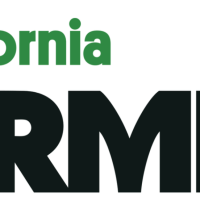| By David Hua, Meadow |

As of January 1, 2023, the state of California will require several changes from its cannabis supply chain in response to the adoption of the Department of Cannabis Control’s (DCC) new consolidated regulations and passage of AB-195. These changes include updates to the calculation and point of excise tax collection, delivery trunk limits, making curbside pickup permanent, new inventory discrepancy thresholds, increased restrictions on providing non-cannabis goods for free as part of a business promotion, as well as allowing retailers (with local jurisdiction approval) to sell prepackaged non-cannabis infused and non-alcoholic food and beverages. Overall, the changes to California’s cannabis operations going into 2023 are designed to improve the industry’s regulation and compliance, as well as generate additional revenue for the state. By implementing these changes, California is aiming to take steps that ensure its cannabis industry is sustainable and responsible, while also meeting the needs of its consumers. For retailers, the changes are yet another case of needing to adapt, but also a great opportunity to review and strengthen your operations. 1. AB-195 – Excise Tax Collection at the Point-of-Sale One of the major changes under AB-195 is the implementation of the cannabis excise tax at the point-of-sale. Beginning in 2023, buyers of cannabis or cannabis products in California will be subject to a 15% excise tax on their gross receipts. This tax is intended to generate additional revenue for the state, which can be used to fund programs related to public safety, research, and education. Previously it was collected by distributors and remitted quarterly to CDTFA for arm’s-length transactions (taking place between independent parties). Calculating the excise tax correctly, as well as compounding the sales tax and the variations of taxation on cannabis and non-cannabis products, is critical. Also, calculating 2022 inventory vs 2023 inventory to make sure the taxes are reported correctly is the only way to make sure you can claim the full credit you are eligible for from CDTFA. It’s essential that all cannabis retailers review their tax settings, collections, and CDTFA payment schedule with a tax professional to ensure they’re remaining compliant. At Meadow, our cannabis POS system is already set up to make it easy to see what excise has already been paid and what’s left to remit. We’re ready for this regulatory change and launched an easy way to see which products were received before January 1 and have excise already paid, and which products were received after January 1 and are not eligible for a credit. 2. §15402: Customer Access to the Retail Area via Curbside Pickup Under the new regulations, storefront retailers will also be allowed to permanently offer curbside delivery as an option for their customers and clarifies the requirements for curbside delivery. This change is designed to improve customer access to cannabis products and make it more convenient for people to complete their purchase. 3. §15034: Significant discrepancy in Inventory at any point in time Another key aspect of the consolidated regulations is the inclusion of new methods for enforcing inventory discrepancy thresholds. Specifically, the regulations specify that retailers may not have an inventory discrepancy of 5% or higher. This will now be measured by comparing your physical inventory to your inventory in Metrc. This change is meant to help ensure that retailers are accurately tracking their inventory and preventing any potential loss, theft, diversion, or inversion. This also means that if your POS does not accurately reflect your physical inventory, and if your Metrc account does not accurately reflect your POS inventory, you have no way of knowing if you are in compliance. Meadow’s integration gives our partners the confidence that Metrc and POS inventories are an accurate reflection of one another. 4. §15040.2. Prohibited Business Promotions. Additionally, the regulations include new restrictions on the provision of free non-cannabis goods and business promotions. Under the new rules, licensed retailers are now additionally prohibited from providing free non-cannabis goods to any person, and they are also prohibited from allowing individuals who are not employed by the retailer to provide free cannabis goods on the licensed premises. As before, licensees are prohibited from giving away any amount of cannabis or cannabis products as part of a business promotion. 5. §15407 – Sale of Non-Cannabis Goods This allows retailers operating a consumption area to sell prepackaged non-cannabis-infused and non-alcoholic food and beverages if allowed by the local jurisdiction. We see this as a move in the right direction; consumption lounges should encourage lounging. Customers are more likely to spend time in a consumption lounge and have a positive experience when given the ability to purchase non-medicated food and beverages alongside their joints and dabs. Hydrating and eating are simple ways consumers can manage their high, and we see no reason why local jurisdictions should ban this new state-approved measure. 6. §15418: Cannabis Goods Carried During Delivery From our perspective, the most significant operational change under the consolidated regulations is the increase in the value of cannabis goods that may be carried during delivery to $10,000. Previously the limit was set at $5,000, with at most $3,000 of which could consist of unordered inventory. But in the new regulations, this limit will be increased to $10,000 and does not contain any restriction on the amount of that total which must be pre-ordered. This means cannabis delivery operators have significantly more flexibility in the number of products that they’re able to load into their delivery vehicles, eliminating the back-and-forth trips between the inventory hub to pick up orders, saving time and gas money when they deliver into their busiest spots or cannabis deserts without dispensaries nearby. Using Meadow’s advanced dynamic delivery system in California (also called ice cream truck or trunk-by-trunk delivery), each vehicle becomes its own inventory hub with a designated service area and customized menu offerings, making it possible to deliver to quickly customers within custom delivery zones. The new increased value of available inventory in the vehicle means this sales channel has the potential to help dispensaries become much more efficient and increase revenue potential. And with Meadow’s auto-dispatch functionality, delivery orders are automatically assigned to vehicles within that zone without manual labor. It’s never been easier to set custom delivery regions, analyze sales by ZIP code for smarter inventory stocking, send geo-targeted SMS marketing to former customers in that area with discount codes or special offers to drive sales, and then deliver within minutes. Within Meadow, it’s easy to set up taxes by zones to ensure you’re accounting for different sales and local cannabis tax rates everywhere you deliver. (We dove deep into the benefits of Dynamic Delivery in the first Meadow Memo). |



